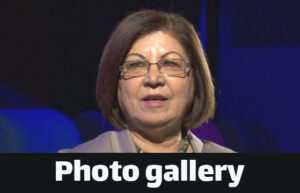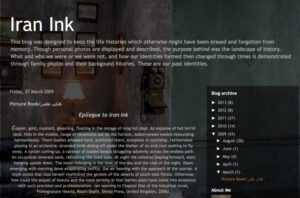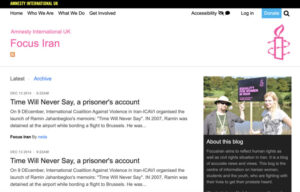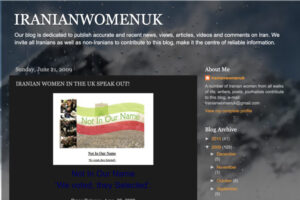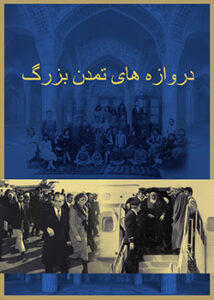Girl Child Marriage in the Islamic Republic of Iran
Introduction
Iran is a signatory to the international convention on the right of the child and has ratified it in November 2001. Nevertheless, violence against children which is incorporated in the Iranian Civil Law has continues to exist. According to Article 1041 of the Civil Law, the age of marriage for girls is 13 and boys 15. However, if the child’s guardian (father or grandfather) requests and the court conclude that she/he is adult enough to be married off, the girl-child can be married at 9 years of age or even younger; and the boy before 15 years of age.
This report will highlight the continuing practice of child marriage and the areas where the practice is more widespread.
According to statistics, child marriage is predominantly practiced in Sistan and Baluchistan, Khorasan Razavi, East and West Azarbaijan, Fars, Tehran, Hamadan and Mazandaran provinces. The minister for Health, Mr Seyed-Hossein Ghazizadeh Hashemi criticised the 4,000 marriages registered in 2011 in Tehran, were between 10-14 years of age and 75 girl/boy-childen under the age of 10. He emphasised that such marriages are against the law and often practiced among families of the addicts, or illiterate, or those of single parent, stepchild and generally families below social standards.
Farshid Yazdani, ex-head of Association for the Right of Children also confirms that in 90% of the cases the girls are young children. According to ISNA, Ms Shahin Mowlavardi, Vice-president for Women has reiterated that marriage of children under 10 is unacceptable and her department has asked the justice department to report of the number of cases,
Some women members of parliament have gone as far as to ask the Ulama to issue Fatwa against child marriage. It seems that some of the Ulama are against the practice and this can be sited on the website of Ayatollah Mokarem Shirazi in which it states that marriage below the age of 13 is forbidden (hara’m). “In the past, parents were given permission to marry their young children and there were no problems in that. But in this day and age, it has been proved that such marriages are not good for boys and girls and if occur they should be nulled.”
The Imam Ali Foundation has carried out a research on the proportion of child marriage among various ethnic groups:
The Turks, %15, Kurds, 4.5%, Lors, 3.8%, Fars, 15%, Lek, 4.5%, Baluch, 8.5%, Arab, 8%,
Sistan 2.5%, Hezareh, 4.7%, Pashtu, 8%, Tajik, 10%, Mazni, 12%, Uzbek, 2.5%, Gilak, 0.5%, other ethnic groups 0.5%.
The same research shows that child marriage among boys is 32% and girls 65%. Those who are less literate have a bigger percentage of child marriage in their category. Among the research, 37% of parents were illiterate, 37.5% under secondary schooling, 22% high school or less and only 3% had higher education. Among the married children, 40% were unhappy, 11-12% relatively unhappy, 7-17% were quite happy in marriage. Of the married girls, 80% had no history of repeated miscarriages. About 56% used some form of contraceptive and 44% did not use any contraceptive method. Among the group in research, 11% were married before puberty, 74% after and 15% during puberty. On history of domestic violence against these groups, 47% had history of bruises, 21% broken bones, 3% loss of body part. The age difference between spouses: 10%, 15-40 years, 85% less than 10 years.
Young girls who are married off, have less chance to continue schooling. According to a research carried out by Camila Ahmadi in 7 provinces, 27% of the victims are at school at the time of marriage; 45% had left school to help with house work and child care. Most respondents had primary school education and only 10% had finished high school. In 57.1%, the girl was at school during marriage process. In 74.1% and during negotiations, they had been promised to continue their education. This had never happened.
In areas, where child marriage is practiced, decisions were often taken by the parents but 76.2% said they were informed of the decision, while 23% said they had no knowledge of who they were married to and 42.9% were not willing to get married.
The research indicated that 97% of the girls had at least one pregnancy and were taken care by the mother and members of family, 45% had no complication during pregnancy, while 27% had painful labour and extreme bleeding.
One of the respondents said she had a child before the age of 15 and 88% were in risk of tears and infection during child birth. The respondents had no knowledge of early childbirth and the risks it could carry. While they were stitched up after birth, they were unaware of the consequences.
Of the male respondents in this research, 42% were 17 years old when their first child was born. At the time of the research they already had 2 children.
In all, 60% of the respondents believed child marriage must be stopped, while 32.5% believed it depends on the body growth of the child and personal beliefs. However, none of the respondents had any knowledge of the legal age of marriage and believed legal age is 18 for girls and 20 for boys.
Observations in rural areas of Gilk-abad in eastern Azarbayjan showed that girls are engaged at the early age of 1-2 and there were no girl above the age of 5 who was not engaged to someone. In some cases the female is being engaged while still in her mother’s womb. In the interviews, the locals spoke of their beliefs and traditions to carry out such practice.
In the provinces of Sistan and Baluchistan the ratio of child marriage had never been below 40%. Death in childbirth and complications during and after birth are common. Of 5,64% births, 12% of women die during childbirth. In 2015, the above two provinces have had the highest birth rate of under 15 mothers.
Reason for early child marriage are often tradition, religion, family honour and cultural.
The patriarchal system in the families contributes to the phenomenon of early child marriage. Other factors range from poverty, addiction, migration and similar factors among the population.

